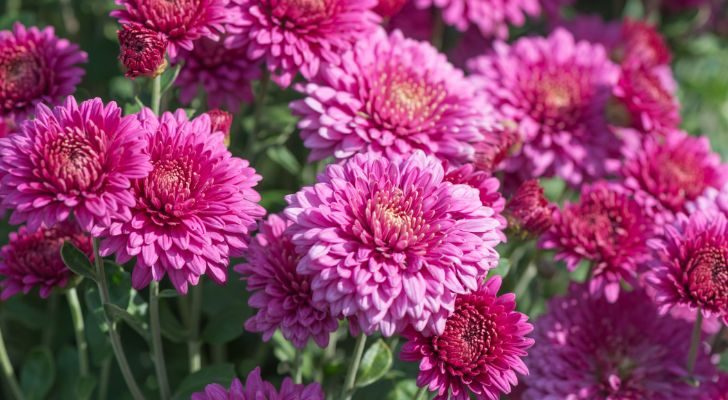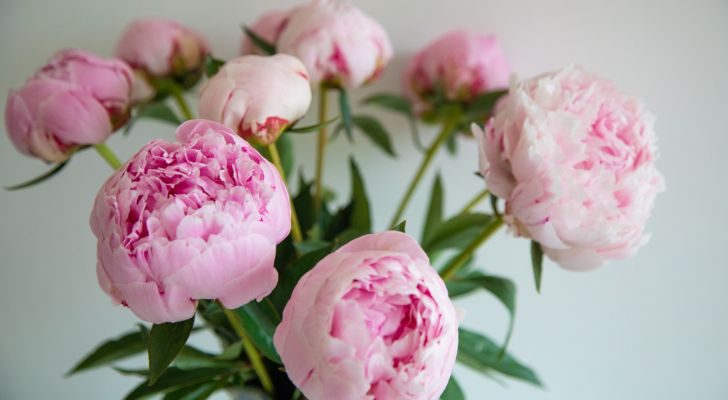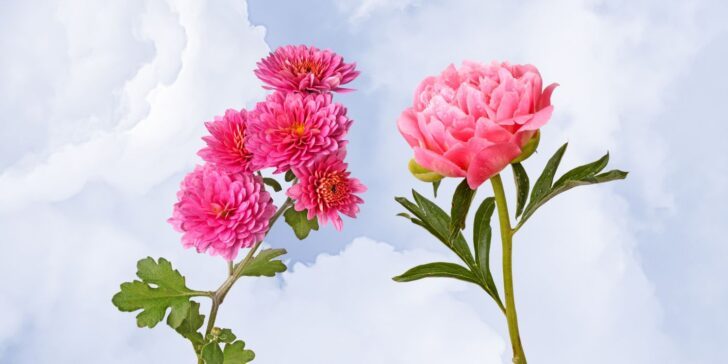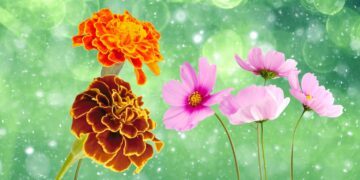If chrysanthemums and peonies are your birth flowers, then you’re in for a treat.
Did you know these flowers have roots in Asia, and some even have royal connections? They’ve inspired everything from timeless pieces of music to intricate works of art.
Let’s dive into what makes chrysanthemums and peonies so special.
10 Facts about Chrysanthemums

Chrysanthemums were first cultivated in China as early as 1500 BC. People ate them in salads and brewed them in tea.
People in Japan gave chrysanthemums a royal status. The highest awards you can receive in Japan for service to the nation are the Supreme Orders of the Chrysanthemum.
National Chrysanthemum Day has been celebrated on September 9 in Japan since the year 910. It is one of the country’s sacred festivals. On this day, people drink sake with chrysanthemum petals.
By the 17th century, chrysanthemums had made their way into European culture. Some European countries, such as Italy, associate them with death and use them for funerals and graves.
Chrysanthemums come in many different colors and shades, including pink, red, purple, orange, yellow, and white.
In the United Kingdom, the National Chrysanthemum Society aims to promote the chrysanthemum. The group organizes events and flower shows around the country.
Chrysanthemums grow well in sunny, fertile areas. They don’t like dry conditions, shade, waterlogged soil, and winter frost.
Italian composer Giacomo Puccini wrote a piece for a string quartet in 1890 called Crisantemi, which translates to “Chrysanthemums.” It was reportedly written in just one night, after the passing of his friend Prince Amadeo, the Duke of Savoy.
In the 19th century, Japanese artist Keika Hasegawa produced a series of woodblock prints depicting chrysanthemums called One Hundred Chrysanthemums. They were printed in 1863, and copies can still be found today.
If you visit Japan in the fall, you might see the Kasama Chrysanthemum Festival, marking the beginning of the season. This festival, which started in 1908, boasts a collection of over 8,000 colorful chrysanthemums!
10 Facts about Peonies

Peonies have been used in traditional Chinese medicine for 2,000 years. They are used to treat people with blood disorders, congestion, and worms.
The peony is rumored to be one of the first flowers used only for ornamental purposes in the ancient Chinese city of Luòyáng. It is sometimes called “the flower from Luòyáng.”
China is home to the Luòyáng International Peony Garden, ranked by travelers as one of the best things to do in this city. The gardens are full of colorful peonies to explore.
There are three main types of peonies – tree peonies, herbaceous peonies, and Itoh, or intersectional peonies. Herbaceous and Itoh peonies need plenty of sunshine to grow, while tree peonies thrive in light shade.
A 2019 survey in China asked voters what the country’s national flower should be, and the tree peony received the most votes. China has already had a national flower, the plum blossom, since 1928.
The only two species of peony not native to Asia and Europe are Brown’s peony and the California peony, which are native to North America.
If you see peonies in a garden, you’re most likely looking at the Chinese peony or the European common peony. These flowers are white, rose, pink, and red.
In The Peony Bush, singer Danny Kaye describes the peony as his favorite flower and wonders whether it made his lover smile at him.
The American Peony Society was created in 1903 to promote and study peonies. The group hosts an annual convention with flower shows, seminars, and discussions about peonies.
Although rare, “peony” is also a girl’s name. It is one of the rarer floral baby names and has Greek origins, inspired by the Greek god physician Pæon. The name Peony can be translated to mean “healing.”
With histories that date back thousands of years, did you ever imagine a pretty bunch of flowers could have so much meaning?
People like these chrysanthemums and peonies so much that societies and festivals are dedicated to promoting and enjoying them.
Whether you’re celebrating your birthday this November or planning a thoughtful gift for a friend, you’ve now got more insights about these birth flowers!


















